Themed collection 2015 Emerging Investigators by ICF

Contributors to the 1st Emerging Investigators collection
Inorganic Chemistry Frontiers profiles the contributors to the “Emerging Investigators” themed collection.

Inorg. Chem. Front., 2016,3, 729-740
https://doi.org/10.1039/C6QI90021F
Challenges and recent advances in MOF–polymer composite membranes for gas separation
This review summarizes the recent progress in the fabrication of MOF-polymer membranes including the challenges, difficulties and corresponding solutions.

Inorg. Chem. Front., 2016,3, 896-909
https://doi.org/10.1039/C6QI00042H
Recent developments in the catalytic hydrogenation of CO2 to formic acid/formate using heterogeneous catalysts
This review highlights the recent trends in the heterogeneous hydrogenation of CO2 to formic acid/formate.
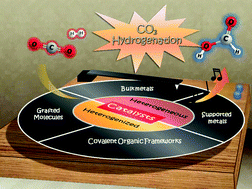
Inorg. Chem. Front., 2016,3, 882-895
https://doi.org/10.1039/C5QI00231A
Recent advances in iron-catalysed cross coupling reactions and their mechanistic underpinning
Advances in iron-catalysed cross coupling from 2010–2015 are critically reviewed.
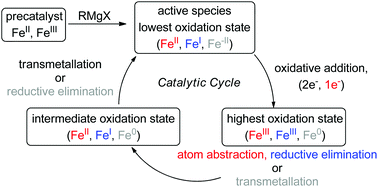
Inorg. Chem. Front., 2016,3, 766-790
https://doi.org/10.1039/C5QI00295H
Coherence and organisation in lanthanoid complexes: from single ion magnets to spin qubits
Molecular magnetism is reaching a degree of development that will allow for the rational design of sophisticated systems.
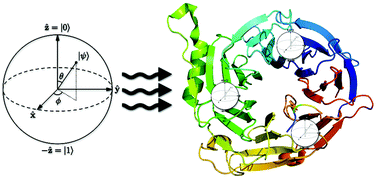
Inorg. Chem. Front., 2016,3, 568-577
https://doi.org/10.1039/C5QI00296F
Rational design of semiconductor-based photocatalysts for advanced photocatalytic hydrogen production: the case of cadmium chalcogenides
This review summarizes the recent advances in developing CdX (X = S, Se, Te)-based photocatalyst systems for photocatalytic hydrogen production from water.
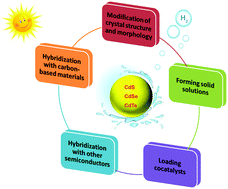
Inorg. Chem. Front., 2016,3, 591-615
https://doi.org/10.1039/C5QI00217F
Two-dimensional layered nanomaterials for gas-sensing applications
In this critical review, we mainly focus on the current developments of gas sensors based on typical 2D layered nanomaterials, including graphene, MoS2, MoSe2, WS2, SnS2, VS2, black phosphorus (BP), h-BN, and g-C3N4.
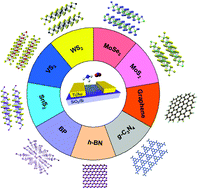
Inorg. Chem. Front., 2016,3, 433-451
https://doi.org/10.1039/C5QI00251F
Intercalation in two-dimensional transition metal chalcogenides
We review various exfoliation methods and extensive tuning of chemical and physical properties for 2D layered nanomaterials based on intercalation chemistry.
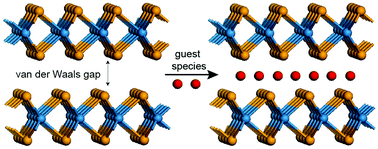
Inorg. Chem. Front., 2016,3, 452-463
https://doi.org/10.1039/C5QI00242G
Nanozymes in bionanotechnology: from sensing to therapeutics and beyond
Nanozymes are nanomaterials with enzyme-like characteristics, which have found broad applications in various areas including bionanotechnology and beyond.
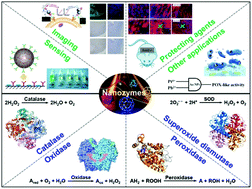
Inorg. Chem. Front., 2016,3, 41-60
https://doi.org/10.1039/C5QI00240K
Stirring-assisted hydrothermal synthesis of ultralong α-MnO2 nanowires for oxygen reduction reaction
Ultralong α-MnO2 synthesized by a stirring-assisted hydrothermal treatment of bulk MnO2 efficiently catalyzes the quasi-4-electron oxygen reduction reaction.
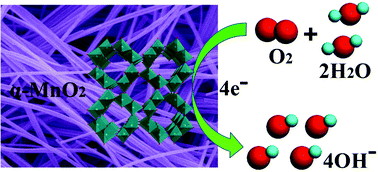
Inorg. Chem. Front., 2016,3, 928-933
https://doi.org/10.1039/C6QI00056H
Light induced catalytic hydrodefluorination of perfluoroarenes by porphyrin rhodium
Photocatalytic hydrodefluorination of a series of perfluoroarenes by rhodium porphyrin complexes was described. The key intermediate (por)Rh-C6F4R underwent fast photo-cleavage of Rh–C bonds to produce hydrodefluorination products.
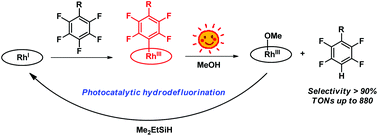
Inorg. Chem. Front., 2016,3, 861-865
https://doi.org/10.1039/C5QI00269A
Formation of a tetranickel octacarbonyl cluster from the CO2 reaction of a zero-valent nickel monocarbonyl species
The CO2 reaction of a nickel(0) complex involves multiple reaction pathways including tetranickel cluster formation via reductive disproportionation of CO2.
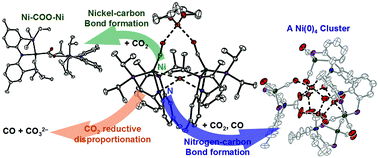
Inorg. Chem. Front., 2016,3, 849-855
https://doi.org/10.1039/C6QI00011H
Isostructural compartmentalized spin-crossover coordination polymers for gas confinement
Here we present two FeII coordination polymers that possess discrete compartments suitable for CO2 physisorption despite the lack of permanent channels.
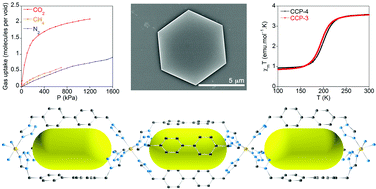
Inorg. Chem. Front., 2016,3, 808-813
https://doi.org/10.1039/C5QI00277J
Chemical modification of gold electrodes via non-covalent interactions
Chemically modifying electrode surfaces with redox active molecular complexes is an effective route to fabricating tailored functional materials.
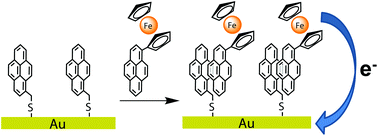
Inorg. Chem. Front., 2016,3, 836-841
https://doi.org/10.1039/C6QI00010J
An iron porphyrin-based conjugated network wrapped around carbon nanotubes as a noble-metal-free electrocatalyst for efficient oxygen reduction reaction
This study reported the first system of Fe-porphyrin conjugated network on carbon nanotubes for ORR, which exhibited excellent performance with high catalytic activity, robust stability, and good methanol tolerance.
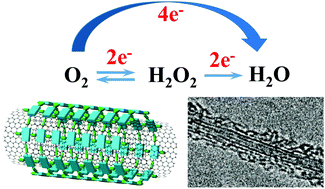
Inorg. Chem. Front., 2016,3, 821-827
https://doi.org/10.1039/C5QI00198F
Syntheses, structures and magnetic properties of a series of mono- and di-nuclear dysprosium(III)-crown-ether complexes: effects of a weak ligand-field and flexible cyclic coordination modes
Six Dy(III)-crown-ether complexes show the effects of coordination anions and geometries on slow magnetic relaxation behaviours.
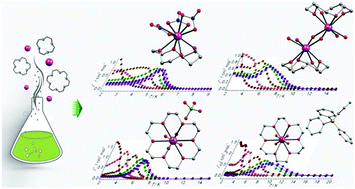
Inorg. Chem. Front., 2016,3, 798-807
https://doi.org/10.1039/C5QI00308C
Rapid synthesis of redox-active dodecaborane B12(OR)12 clusters under ambient conditions
We have developed a fast and efficient route to obtain perfunctionalized ether-linked alkyl and benzyl derivatives of the closo-[B12(OH)12]2− icosahedral dodecaborate cluster via microwave-assisted synthesis.
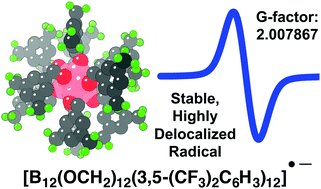
Inorg. Chem. Front., 2016,3, 711-717
https://doi.org/10.1039/C5QI00263J
Cut-and-stack nanofiber paper toward fast transient energy storage
Transient technology allows a device to disappear upon application of an external trigger.
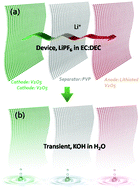
Inorg. Chem. Front., 2016,3, 681-688
https://doi.org/10.1039/C5QI00288E
Development of bis(arylimino)acenaphthene (BIAN) copper complexes as visible light harvesters for potential photovoltaic applications
Readily synthesized, new bis(arylimino)acenaphthene copper(I) complexes exhibit panchromatic light absorption to the NIR region and function in dye-sensitized solar cells.
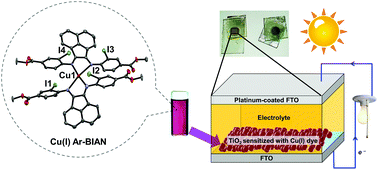
Inorg. Chem. Front., 2016,3, 651-662
https://doi.org/10.1039/C5QI00221D
Six- and seven-coordinate Fe(II) and Zn(II) compounds ligated by unsymmetric xanthene-based ligands: characterization and magnetic properties
We present new ligand platforms for pentagonal bipyramidal metal complexes, and the characterization of the corresponding Zn(II)- and Fe(II)-containing compounds.
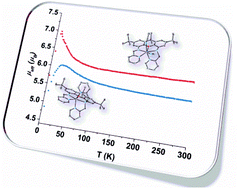
Inorg. Chem. Front., 2016,3, 616-629
https://doi.org/10.1039/C5QI00298B
Rapid, green and inexpensive synthesis of high quality UiO-66 amino-functionalized materials with exceptional capability for removal of hexavalent chromium from industrial waste
UiO-66-NH2 type materials show excellent capability for removal of Cr(VI) from industrial waste.
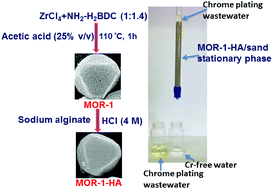
Inorg. Chem. Front., 2016,3, 635-644
https://doi.org/10.1039/C5QI00303B
Binary nickel–iron nitride nanoarrays as bifunctional electrocatalysts for overall water splitting
Electrochemical water splitting provides a facile method for high-purity hydrogen production, but electro-catalysts with a stable bifunctional activity towards both oxygen and hydrogen evolution have been rarely developed.
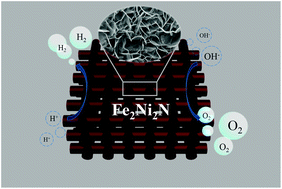
Inorg. Chem. Front., 2016,3, 630-634
https://doi.org/10.1039/C5QI00232J
Alkoxide-intercalated NiFe-layered double hydroxides magnetic nanosheets as efficient water oxidation electrocatalysts
Alkoxide-intercalated NiFe-layered double hydroxides were synthesized via the nonaqueous methanolic route. These magnetic nanosheets can be exfoliated in water and exhibit an outstanding behaviour as OER electrocatalysts.
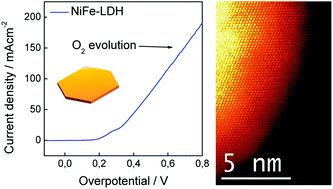
Inorg. Chem. Front., 2016,3, 478-487
https://doi.org/10.1039/C6QI00009F
Dioxygen binding at a four-coordinate cobaltous porphyrin site in a metal–organic framework: structural, EPR, and O2 adsorption analysis
The binding of O2 at a four-coordinate cobaltous porphyrin site within a metal–organic framework is examined through single-crystal X-ray diffraction, EPR spectroscopy, and O2 adsorption measurements.
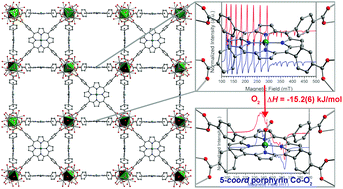
Inorg. Chem. Front., 2016,3, 536-540
https://doi.org/10.1039/C5QI00275C
Thioether-terminated nickel(II) coordination clusters with {Ni6} horseshoe- and {Ni8} rollercoaster-shaped cores
We report two polynuclear nickel(II) compounds whose supramolecular structures are controlled by small inorganic templating anions and π-conjugated Schiff-base ligands (L·SMe3− and HL·SMe2−) with peripheral, structurally exposed methylthioether groups.
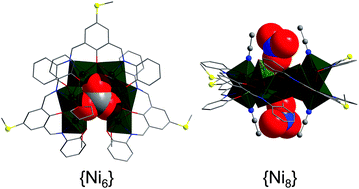
Inorg. Chem. Front., 2016,3, 523-531
https://doi.org/10.1039/C5QI00278H
Coupling of terminal iridium nitrido complexes
The homo- and heterocoupling of molecular terminal iridium(IV) and iridium(V) nitrides is examined. The experimental coupling rates are discussed based on a computational analysis of the transition states.
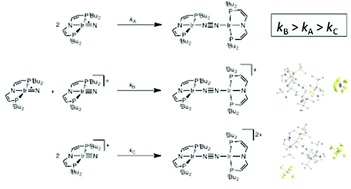
Inorg. Chem. Front., 2016,3, 469-477
https://doi.org/10.1039/C5QI00267B
Effects of hydroxyl group variations on a flavonoid backbone toward modulation of metal-free and metal-induced amyloid-β aggregation
Structural variations of a flavonoid framework noticeably tune the interaction and reactivity of flavonoids with metals, Aβ, and metal–Aβ.
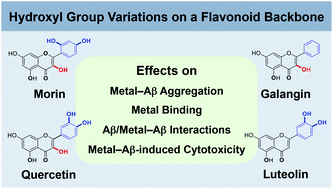
Inorg. Chem. Front., 2016,3, 381-392
https://doi.org/10.1039/C5QI00219B
Electrochemical fabrication of one-dimensional porphyrinic wires on electrodes
[5,15-Di(4-aminophenyl)-10,20-diphenylporphyrinato]zinc(II) was found to electropolymerize on electrodes such as glassy carbon (GC), indium tin oxide (ITO), and tin oxide, to form a redox-active, stable, and reproducible π-conjugated polymer.
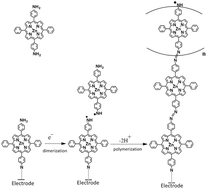
Inorg. Chem. Front., 2016,3, 370-375
https://doi.org/10.1039/C5QI00239G
Insertion of organometallic moieties into peptides and peptide nucleic acids using alternative “click” strategies
Application of alternative “click” strategies (metal-free photoclick and one-pot click) to cymantrene and ferrocene derivatives yielded novel metal-containing conjugates.
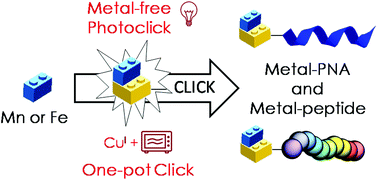
Inorg. Chem. Front., 2016,3, 397-405
https://doi.org/10.1039/C5QI00270B
Imparting Brønsted acidity into a zeolitic imidazole framework
The impartment of Brønsted acidity into a zeolitic imidazole framework, ZIF-90 has been achieved via post-synthetically oxidizing the aldehyde group into carboxylate group.
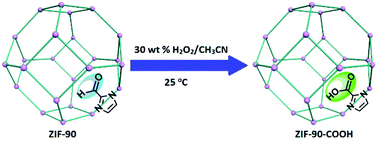
Inorg. Chem. Front., 2016,3, 393-396
https://doi.org/10.1039/C5QI00229J
Discoveries from a phenanthroline-based dynamic combinatorial library: catenane from a copper(I) or copper(II) template?
We report here a DCL study of a phenanthroline-based building block focusing on catenane formation with copper templates.
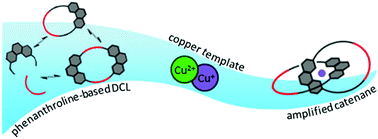
Inorg. Chem. Front., 2016,3, 348-353
https://doi.org/10.1039/C5QI00227C
Mixed-anion templated cage-like lanthanide clusters: Gd27 and Dy27
Two record-large odd-numbered Ln27 lanthanide clusters, each one featuring one CO32− and eight ClO4− groups as mixed anion templates, were obtained by controlling the hydrolysis of the Ln3+ ions in the presence of simple propionate ligands.
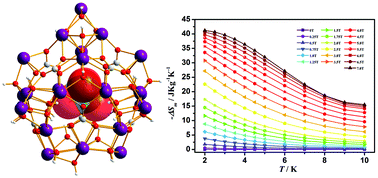
Inorg. Chem. Front., 2016,3, 320-325
https://doi.org/10.1039/C5QI00249D
N-Heterocyclic carbene adducts to [Cp′FeI]2: synthesis and molecular and electronic structure
Adducts [Cp′FeI(NHC)] exhibit a highly anisotropic magnetic Ms = ±2 ground state resulting in unusual large spin–lattice (Orbach) relaxation barriers observed by zero-field 57Fe Mössbauer spectroscopy.
![Graphical abstract: N-Heterocyclic carbene adducts to [Cp′FeI]2: synthesis and molecular and electronic structure](/en/Image/Get?imageInfo.ImageType=GA&imageInfo.ImageIdentifier.ManuscriptID=C5QI00235D&imageInfo.ImageIdentifier.Year=2016)
Inorg. Chem. Front., 2016,3, 250-262
https://doi.org/10.1039/C5QI00235D
Synthesis, crystal and electronic structure, and optical properties of two new chalcogenide-iodides: Ba3Q4I2 (Q = S, Se)
Two new ternary chalcogenide-iodides, Ba3S4I2 and Ba3Se4I2, exhibit both covalent and ionic chemical bonding.
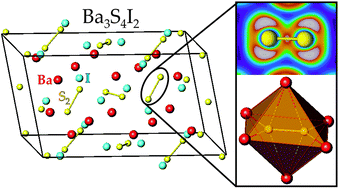
Inorg. Chem. Front., 2016,3, 306-312
https://doi.org/10.1039/C5QI00225G
Morphology–activity correlation in hydrogen evolution catalyzed by cobalt sulfides
CoS electrocatalysts with various morphologies such as hollow nanoprism, broken nanoprism, and 3D nanoparticle could be obtained by a facile and rapid two-step microwave-assisted synthetic route. The correlation between catalyst morphology and electrocatalytic H2 evolution performance was systematically studied.
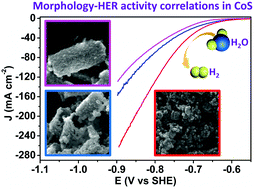
Inorg. Chem. Front., 2016,3, 279-285
https://doi.org/10.1039/C5QI00196J
Assembled 3D electrocatalysts for efficient hydrogen evolution: WSe2 layers anchored on graphene sheets
A 3D WSe2/rGO hybrid nanocomposite was constructed using a one step colloidal synthesis approach, and it exhibited excellent HER performance.
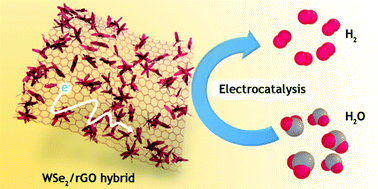
Inorg. Chem. Front., 2016,3, 313-319
https://doi.org/10.1039/C5QI00216H
Mechanochromic Cu(I) boron imidazolate frameworks with low-dimensional structures and reducing function
Two low dimensional multifunctional Cu(I) boron imidazolate frameworks displayed unique luminescence mechanochromism, and BIF-40 can load AuPd bimetal nanoparticles directly for further catalysis.
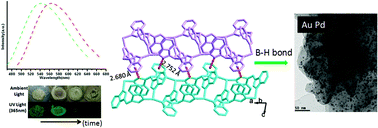
Inorg. Chem. Front., 2016,3, 263-267
https://doi.org/10.1039/C5QI00155B
Designing structurally tunable and functionally versatile synthetic supercontainers
A new family of flexible metal–organic supercontainers exhibit selective binding with cationic guests and tunable supramolecular catalytic activity.
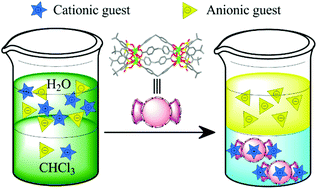
Inorg. Chem. Front., 2016,3, 243-249
https://doi.org/10.1039/C5QI00212E
Cobalt nitrides as a class of metallic electrocatalysts for the oxygen evolution reaction
Metallic cobalt nitrides arising from electron delocalization modulation have been proven to be highly efficient OER electrocatalysts.
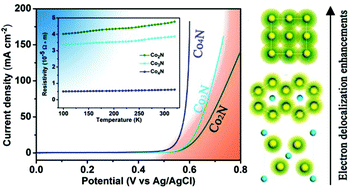
Inorg. Chem. Front., 2016,3, 236-242
https://doi.org/10.1039/C5QI00197H
Enhancing the photoluminescence quantum yields of blue-emitting cationic iridium(III) complexes bearing bisphosphine ligands
We demonstrate a turn-on strategy for blue-emitting [Ir(C^N)2(P^P)]PF6 complexes and apply them to EL devices.
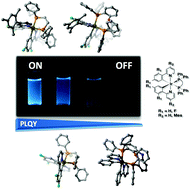
Inorg. Chem. Front., 2016,3, 218-235
https://doi.org/10.1039/C5QI00177C
Heterotrimetallic sandwich complexes supported by sulfonamido ligands
CoII complexes bearing sulfonamido ligands derived from tris(2-aminoethyl)amine (H6tren) assemble into complex architectures in the presence of Group II ions through interactions between the Group II ion and the sulfonyl oxygens.
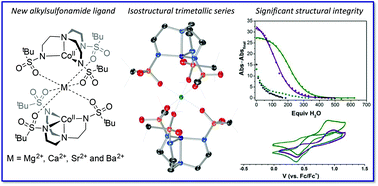
Inorg. Chem. Front., 2016,3, 142-149
https://doi.org/10.1039/C5QI00233H
Magnetization dynamics of a heterometallic Dy-isocarbonyl complex
Slow magnetic relaxation is observed for the first structurally characterized Dy-isocarbonyl complex.

Inorg. Chem. Front., 2016,3, 97-103
https://doi.org/10.1039/C5QI00224A
Exploring potential cooperative effects in dicopper(I)-di-mesoionic carbene complexes: applications in click catalysis
Dicopper(I) dimesoionic carbene complexes are active catalysts for the azide–alkyne cycloaddition reaction and are more active than their mononuclear counterparts.
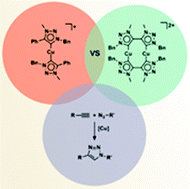
Inorg. Chem. Front., 2016,3, 67-77
https://doi.org/10.1039/C5QI00163C
A high-spin nickel(II) borohydride complex in dehalogenation
A mononuclear high-spin (η2-BH4) nickel(II) complex bearing a macrocyclic tridentate N-donor ligand was prepared and its reactivity was investigated in dehalogenation reactions.
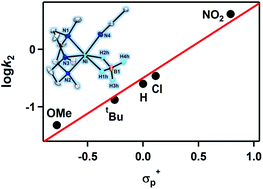
Inorg. Chem. Front., 2016,3, 157-163
https://doi.org/10.1039/C5QI00206K
Reduction of thermal conductivity through nanostructuring enhances the thermoelectric figure of merit in Ge1−xBixTe
Nano/meso-structuring reduces the thermal conductivity in Ge1−xBixTe samples, which results in a thermoelectric figure of merit, zT, of 1.3 in Ge1−xBixTe.
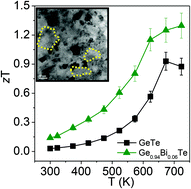
Inorg. Chem. Front., 2016,3, 125-132
https://doi.org/10.1039/C5QI00230C
Cu/TiO2 octahedral-shell photocatalysts derived from metal–organic framework@semiconductor hybrid structures
A synthetic method has been developed for Cu/TiO2 photocatalysts with hollow structures by templating on metal–organic frameworks (MOFs), which offers versatility to tailor the photocatalyst configurations by simply altering treatment conditions on MOFs.
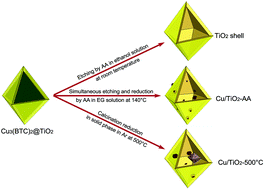
Inorg. Chem. Front., 2016,3, 104-110
https://doi.org/10.1039/C5QI00205B
A surfactant-thermal method to prepare crystalline thioantimonate for high-performance lithium-ion batteries
A novel crystalline thioantimonate prepared by a surfactant-thermal strategy demonstrates high performance as an anode material for Li-ion batteries.
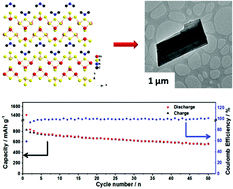
Inorg. Chem. Front., 2016,3, 111-116
https://doi.org/10.1039/C5QI00194C
Tuning oxygen-sensing behaviour of a porous coordination framework by a guest fluorophore
A new oxygen-sensing material with desirable excitation/emission characteristics was achieved by using a simple guest fluorophore.
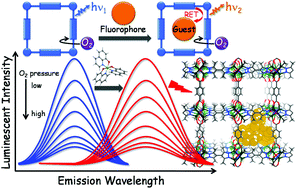
Inorg. Chem. Front., 2015,2, 1085-1090
https://doi.org/10.1039/C5QI00157A
Isoreticular synthesis of 2D MOFs with rotating aryl rings
A series of isoreticular two-dimensional metal–organic frameworks (MOFs) was synthesized with group 11 metals and semirigid ligands that bind in a syn conformation.
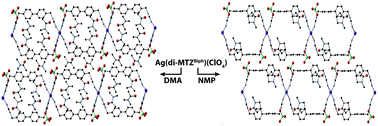
Inorg. Chem. Front., 2015,2, 1001-1005
https://doi.org/10.1039/C5QI00135H
Nanosheet-assembled MoSe2 and S-doped MoSe2−x nanostructures for superior lithium storage properties and hydrogen evolution reactions
The development of layered molybdenum chalcogenides with largely exposed active sites is receiving intense interest because of their potential applications in energy storage and catalysis.
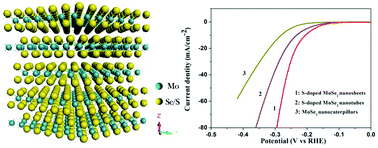
Inorg. Chem. Front., 2015,2, 931-937
https://doi.org/10.1039/C5QI00126A
About this collection
Welcome to the inaugural Emerging Investigators themed collection of Inorganic Chemistry Frontiers. It showcases the high quality research of up-and-coming researchers working at the forefront of inorganic chemistry science.